Ice Fishing for Walleye
Like trout, walleye are a highly sought out cold water fish, and for good reason. They are delicious! Add a few inches of ice, and the perfect recipe awaits anyone willing to bear the frigid air. But they won’t jump in the frying pan. There are some secrets to ice fishing for walleye.
Ice Fishing for Walleye Tips
Owner of Fish LSC Charters, Ian Jones guides year round on the world famous walleye fishery Lake St. Clair. But he especially loves the winter. “This is the time of the year we get vicious hits, and they put up a great fight,” says Jones. While Lake St. Clair is unique to itself, his strategy of catching walleye through the ice will apply to fisheries across the country. Here’s an expert’s tips on landing big walleye throughout the ice fishing season.
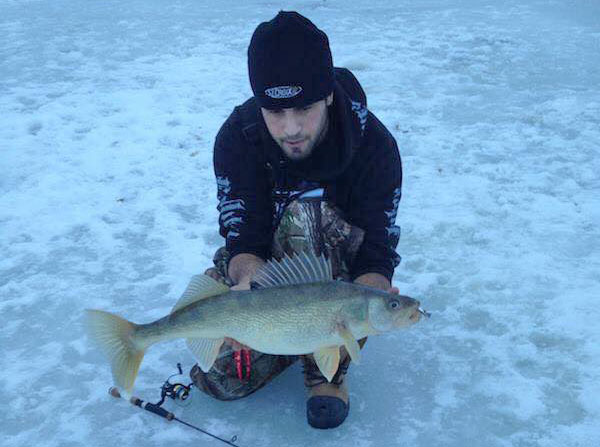
Ice Fishing for Walleye: Where to Catch Them
Jones is so confident in his ability to select productive areas that he does not use a Vexilar or other graph to find the walleye. According to Jones, the key is to target the bottom edges of rock shoals and reefs. His primary depth is between 16 and 18 feet deep.
Jones regularly sees anglers make a mistake. They often overlook the current on Lake St. Clair. “The current is great, and tells me where to position myself,” he admits. “I position on the up current edge of the shoals.”
Ice Fishing for Walleye: Bait and Tackle
When it comes to tackle, a Rapala Jigging Rap in size #5 is Jones’s first choice. But it’s not always the one he uses. Jones will experiment between sizes 3-7. He adds a little extra hardware to the rap. Jones will add a stinger hook and a minnow to the bottom treble hook.
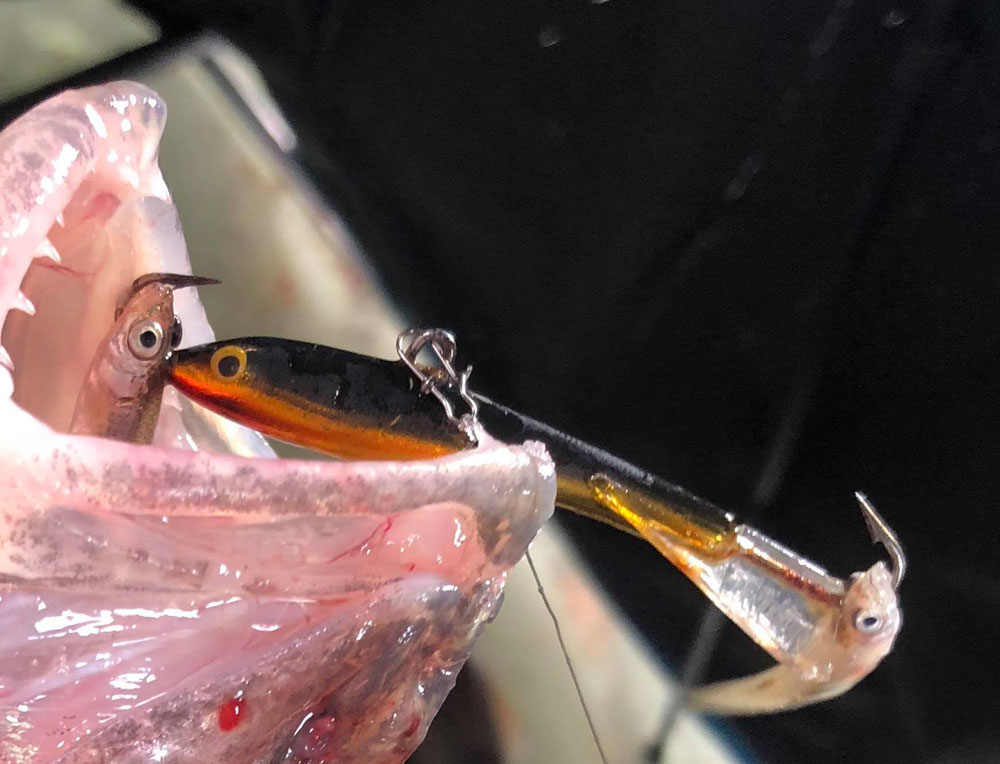
Color selection is as creative as the angler. He swears, “All colors can work, but I really stay close to opposite spectrums. Usually, I begin with chartreuse, but when I switch. I go all the way to black and blue.”
Jones ties the rap to 10-pound a fluorocarbon leader, which is attached to 15-pound braid line. The line is hooked up to a Shimano Stradic reel with a 5.4.1 gear ratio. His rod of choice (Choose the Right Fishing Rod) is a 28-inch medium action rod. “Don’t horse a walleye!” he cautions. “This rod setup allows me to wear them out. Otherwise, they can quickly snap the line or shake loose.”
Ice Fishing for Walleye: Retrieving a Rapala Jigging Rap
After setting up camp in a high percentage area, Jones does not move much. “Walleye move around so much, it is usually best to just wait for them to come to me.” He concedes the stereotypical times of dawn and dusk are best and employs three different ways to work the rap. All of these techniques begin with placing the plug six inches off the bottom.
1. “The rap naturally swerves one direction, but if free falling, it will flutter instead.” He acknowledges, “This is my most productive retrieve – repeat the fluttering action.”
2. If this does not produce, he “pounds it off the bottom” by lifting it up several feet and letting it fall to the bottom. This will stir up the mud and smack the rocks, which calls them in from a distance.
3. His third tactic: “A hop of 2-3 feet off bottom with some tension on the line will cause it to flutter away from the hole.”
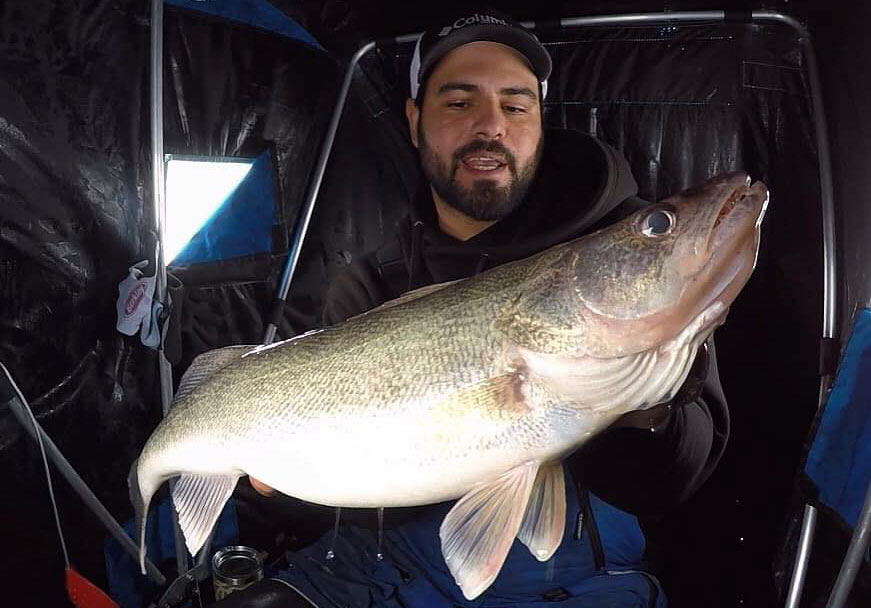
The Best Weather for Walleye Fishing
If ice fishing is not rugged enough, the worst weather is usually the best time to catch walleye. “Sunny days,” says Jones, “is usually the worst time to be fishing for walleye. As a general rule, the worse the weather, the better the bite. However, if I’m forced to fish in the sun, I’ll set up on snow covered ice, because it produces some shade and makes the fish a bit more active.” He adds, though, that if an unexpected warm front occurs after a cold spell, the fishing can get red hot.
Whether on Lake St. Clair or another walleye fishery, use these simple tips to put some walleye in the frying pan before the ice melts. When the ice melts, it is time to take your Megaware-protected boat on the water and employ Nicole Stone’s tips for Early Season Walleye. Either way, it’s good eating.

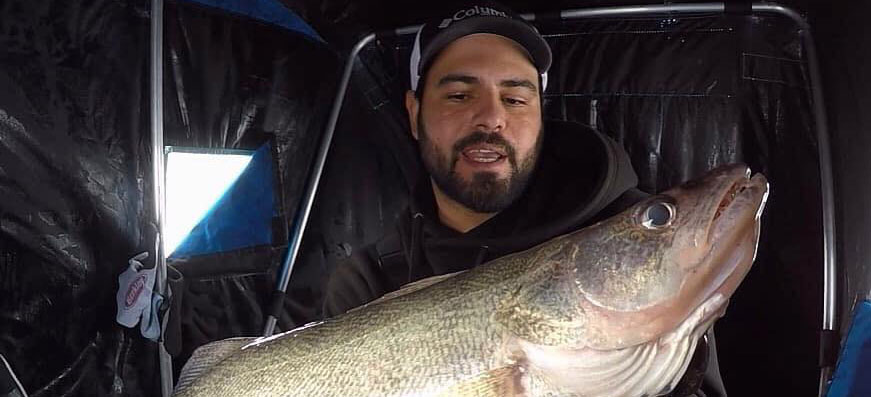

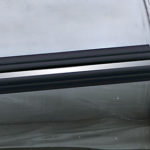
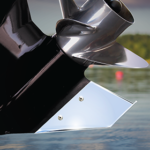
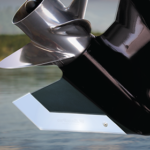

Comments